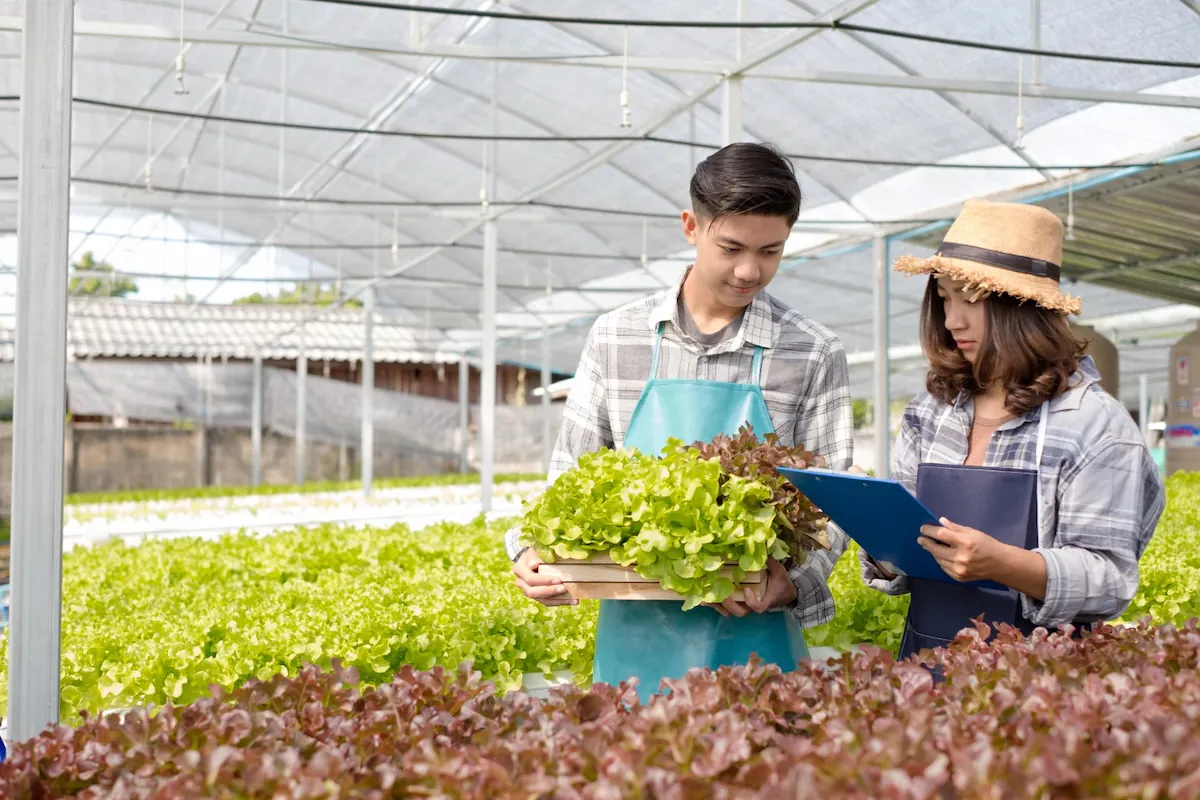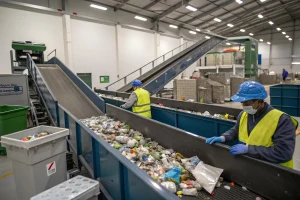Table of Contents
In this modern era, many aspects of life have also become more advanced and practical, one of which is agriculture. As you may realize, urban farming methods have started to develop in urban areas.
The existence of urban farming practices today has become an effective solution to meet food needs amidst limited land in urban areas. So, what is urban farming? Let’s explore more below!
What Is Urban Farming?

Urban farming is a farming practice carried out in urban areas by utilizing limited land or space, such as rooftops, home gardens, walls, or other vacant land.
According to data from the Badan Pusat Statistik (BPS), in 2020, 56.7% of Indonesia’s population lived in urban areas. Moreover, this urbanization trend will continue to increase and is projected to reach 66.6% by 2035.
With the growth of urban residents, green open spaces may continue to diminish. Therefore, the presence of this farming method can offer hope for green open spaces and help urban communities provide organic food ingredients.
The concept of urban farming is more practical and efficient even in narrow spaces. Interestingly, this farming method does not solely rely on soil as a growing medium but also utilizes alternatives such as hydroponics, vertical farming, and aquaponics.
Read also: How to Make Compost from Organic Waste, Easy and Fun!
Types of Urban Farming
This modern urban agriculture combines advanced technology and sustainable approaches. With urban farming practices, access to food products will be easier and no longer dependent on supplies from outside the city.
Here are the types of urban farming that have been commonly applied in various regions in Indonesia:
1. Hydroponics
The first and most popular example of urban farming is hydroponics, where the planting process is carried out using water as a planting medium. In its implementation, the water is mixed with essential nutrients needed for plant growth.
2. Aquaponics
The aquaponics technique is a combination of fish farming and hydroponics. The relationship between plants and fish farming is mutually beneficial, where the nutrient-rich water from the fish pond is channeled to the plant growth medium.
The plants will then absorb the nutrients in the water from the pond to grow while simultaneously cleaning the water and producing oxygen. The cleaned water is then channeled back to the fish pond, and this cycle continues.
3. Vertical Garden
While agriculture is generally carried out on horizontal land, the vertical garden technique utilizes vertical spaces such as walls or fences for planting. This planting concept is very effective in urban areas with limited land.
4. Rooftop Garden
If you have an empty and unused part of your house’s roof, you can create a rooftop garden. A rooftop garden utilizes the area on the roof of the house to grow food plants such as vegetables, fruits, and herbs.
5. Greenhouse
A greenhouse is an urban agriculture practice with the concept of creating a space or building that is specially designed for optimal plant growth.
In a greenhouse, the farming process is sheltered from bad weather, such as rain and wind, and achieves optimal results because the plants are protected by the roof and walls of the greenhouse. That is why a greenhouse is suitable for use when the weather is unfavorable.
6. Backyard Garden
Backyard gardening is a popular example of urban farming in various countries, by utilizing the backyard of a house for planting. You can plant easy-to-grow food crops, such as vegetables or fruits that can be consumed directly.
Read also: 3 Ways to Turn Clothes Waste into Useful!
Benefits of Urban Farming

Urban farming practices have many benefits, especially in providing food in urban areas. Some benefits of urban farming include:
1. Supporting Food Availability
The production of food, especially vegetables, fruits, and other herbal plants, in urban areas will greatly help meet the food needs of society. Urban residents will no longer need to rely on supplies from outside the city, which may be more expensive.
2. Reducing Food Waste
In conventional agriculture, food items are prone to rot during distribution, resulting in increased food waste. Not only that, but external factors, like extreme weather that disrupts distribution, can also delay the arrival of food items to their destination.
As a result, food may spoil along the way. The presence of urban farming can reduce food waste by providing quick and easy access to food supplies.
3. Improving Air Quality
The presence of agriculture in urban environments can help maintain and improve air quality. Essentially, every plant can absorb carbon dioxide and produce oxygen daily.
Although not as significant as large trees, these plants still contribute by absorbing carbon dioxide and supplying oxygen for other living beings.
How to Do Urban Farming
Interested in doing urban farming at home? Here are some steps you can take to create a garden easily and cheaply.
1. Find an Available Location
The first step you need to take is to find land and containers for planting. You can find a suitable area for farming, such as the yard, walls, or the roof of your house.
2. Prepare Planting Containers
Next, you can use secondhand items like plastic bottles, buckets, or used cans as plant pots. This method can save your budget and reduce plastic waste at home.
3. Choose Plant Media and Seeds
Next, fill the prepared container with growing medium such as cocopeat, husk, compost, or soil. After that, plant the seedlings that you want and are easy to care for, such as lettuce, mustard, water spinach, green onions, spinach, bok choy, or other plants.
4. Routine Care
Remember, for plants to grow and develop, you must take care of them regularly, such as watering them and placing them in a spot that receives sunlight. You can also provide organic fertilizer to help the growth of the plants.
That is the explanation about what urban farming is, its benefits, and examples. With various adjustable methods, this farming technique can be an effective solution to meet food needs independently.
In addition to practicing urban agriculture methods, you can also participate in environmental preservation by joining Indonesia Asri.
Here, you can participate in various exciting campaigns, one of which is #AksiAsri, which invites you to preserve the environment in many ways. Come on, register yourself now and become a Warga Asri for a healthier Earth!
Read also: What Is Organic Waste? Find Out the Types and Benefits!










